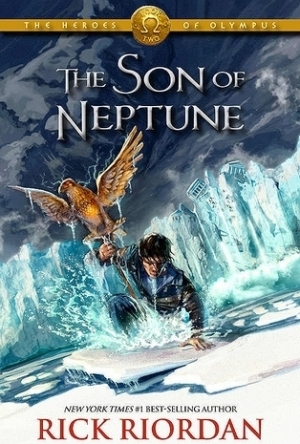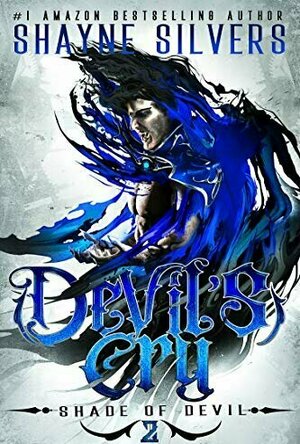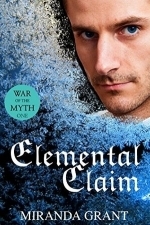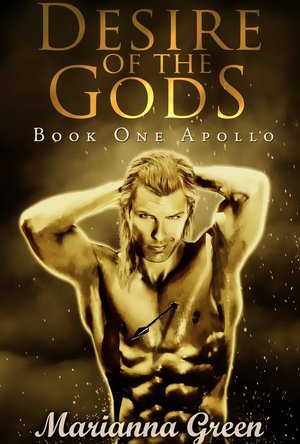
Religion and Trade: Cross-Cultural Exchanges in World History, 1000-1900
Francesca Trivellato, Leor Halevi and Catia Antunes
Book
Although trade connects distant people and regions, bringing cultures closer together through the...
Nick McCabe recommended EPs 1991-2002 by Autechre in Music (curated)
BookInspector (124 KP) rated The Silent Patient in Books
Sep 24, 2020
The narrative of this book is very layered, complex, and discusses many issues. The characters are sharing their thoughts about the relationships with their family and their spouses, and how that effected their present personalities. The author creatively incorporated his Greek heritage into this story, filled with Greek Gods and other bits and pieces. The story doesn’t stay still for long periods of time, there are plenty of surprising twists and turns throughout this book and it was a real page turner to me. The author discussed a very wide variety of topics, such as a difficult relationship with parents; blind love for their spouses; drugs; mental health issues etc.
The setting of this book feels very mysterious, and I liked that there are multiple locations used in this novel. The writing style is creative, well crafted, but easy and pleasant to read. The chapters are pretty short, and due to suspense, the pages just flew by for me. I really liked the ending of the book, it rounded the story well but there are many unanswered questions, which left me unsettled.
So, to conclude, this is a very amusing story, filled with complex and unique characters, and a plot, soaked in love, grief and betrayal. I strongly recommend to read this story and find out, whether Theo succeeds in his quest to make Alice speak again or not. I hope you will enjoy it as much as I did

The Son of Neptune (The Heroes of Olympus #2)
Book
Seven half-bloods shall answer the call, To storm or fire the world must fall. An oath to keep...

Slots Heaven - Real Money Slots & Casino Games
Games and Entertainment
App
*** TRIPLE YOUR MONEY WITH OUR 200% WELCOME BONUS, PLUS 200 FREE SPINS! *** Welcome to the divine...

Devil's Cry : Shade of Devil Book 2
Book
The greatest trick the First Vampire ever pulled was convincing the world that he didn’t exist. ...
Merissa (13524 KP) rated Maxim (Fueled By Lust #6) in Books
Apr 11, 2023
This is a fast-paced book (or maybe it was the speed that I was reading as I simply could not put it down!) with an incredible storyline that involves spoilt, little rich men, psychic abilities, and even the gods. There is never a dull moment and plenty of laughter along the way.
I love the relationship that Maxim has with his brothers and this is evident in the book. The relationship between Maxim and Skylar is both fast and slow. The attraction is instant (as Maxim finds out in the airport) but the rest of it, with love and trust being the biggies, takes time to develop. I loved the explanation given by Skylar about insta-love!
This book has it all for me - action, adventure, a hot alpha male, a smart and feisty female, and sex that scorches the pages. The only trouble I have is leaving the Insedi behind. I feel the need to re-read every one of these books again and I don't say that about every book I read!
* A copy of this book was provided to me with no requirements for a review. I voluntarily read this book; the comments here are my honest opinion. *
Merissa
Archaeolibrarian - I Dig Good Books!
December 19, 2018
Merissa (13524 KP) rated Down to the Sea (Mystic Beach, #1.5) by Aislinn Archer in Books
Jun 17, 2022 (Updated Jun 19, 2023)
Events that happened in Once Upon a Dream from Hunter's perspective, we now see from Brighid or Aedan's. This definitely helped fill the gaps and you see the reasons now for things Brighid did or said.
Aedan has his own love who hasn't 'woken up' yet and he and Brighid decide to pass the time with each other. He is a priest for a Manx Sea God - Manannán mac Lir. This means he has his own insights but he certainly doesn't see everything.
Apart from Brighid's visions, there isn't much paranormal here yet, although I'm sure that's coming in future books. I am loving this story and how the characters change and grow throughout the story.
One thing I have to say - and I know I will be in the minority here - but I got bored with the sex scenes between Aedan and Brighid. It says in the blurb the steam factors are high, and they are. It's just... I discovered I wanted more of the connection, the mysticism, between the two of them, rather than the sex. I found myself skipping over the sex scenes (unlike me) to get the visions or OoB experiences at the end. I loved it when the author changed it slightly near the end so we knew what they were doing but didn't need everything laid out.
As I say, this is my opinion, and it certainly didn't stop me from enjoying the rest of the story! I am now waiting (im)patiently for the continuation of Hunter and Brighid's story, content with waiting for Aedan's simply because I know it's coming.
If you love Ireland and the Irish Gods, I definitely recommend this book and series.
** same worded review will appear elsewhere **
* A copy of this book was provided to me with no requirements for a review. I voluntarily read this book; the comments here are my honest opinion. *
Merissa
Archaeolibrarian - I Dig Good Books!
Jun 12, 2022
Merissa (13524 KP) rated Elemental Claim (War of the Myth #1) in Books
Feb 27, 2018 (Updated Jul 3, 2023)
As I said, this book is full of action and doesn't stop. Emma slowly grows into her powers, but there is definitely still room for more. There are other characters in here that I would love to know about. Xeno, for example. She is the angel only a few years from falling. Her health is failing, and her powers waning. And then suddenly, towards the end of the book, she starts healing. What?! I need to know more. What caused her health to degenerate in the first place, and why is she now healing? And will she and Hunter ever get together? Seriously, I need answers!
This was a well-written book, although there were a few spelling errors that jolted me when I read it. Nothing major, just examples like wanning instead of waning, or severe instead of sever. Certainly not enough to spoil the flow of the story, but enough for me to notice. On the whole, this was a brilliant book, with great world-building, and lots of characters to like, love, or loathe. Absolutely recommended by me, and I can't wait to continue with the series.
* A copy of this book was provided to me with no requirements for a review. I voluntarily read this book, and my comments here are my honest opinion. *
Merissa
Archaeolibrarian - I Dig Good Books!
Feb 27, 2018
Kara Skinner (332 KP) rated Desire of the Gods in Books
Jun 12, 2019
Still reeling from her fiance, Nick, breaking up with her, Paula is desperate to try anything to get him back. So when her neighbor, Mrs. Stephanopolos gives her a magic statue that will give Paula her heart’s desire, she’s skeptical but does the required ritual anyway.
A split second later, Apollo, the Greek god of the sun, is standing in her bedroom, ready to help Paula, even though he thinks Paula can do so much better than Nick.
Everything seems to be working out until Eros sneaks in and shoots one of his insta-love arrows at Apollo. Now the sun god needs to stay permanently blindfolded to avoid falling in love with the first woman he sees, especially when Paula is so not his type. Now Paula and Apollo are stuck with each other until Aphrodite can swoop in and reverse the spell. But with the two of them in such close proximity to each other, they might realize they’re each other’s types after all.
I definitely enjoyed this book. A lot of little details were explained, like the history of the statue and why she and Apollo can understand each other, despite them speaking different languages. And even though this book has a lot of my usual pet peeves, like insta-love, arrogance, and even lack of regard for personal boundaries, I still didn’t mind it. I think it’s easier to accept because Apollo is a god and things work differently for him. His love for Paula doesn’t have to be completely realistic because he’s not human.
However, the actual moment Apollo gets shot is incredibly anti-climactic.
Suddenly, the golden god flinched, and he slapped at the side of his neck as if stung by a mosquito.
“No – Oh No! Not again!” He shut his eyes tight.
“What’s the matter?” Paula stared at him.
“Eros,” groaned the god, keeping his eyes tight shut, “He’s fired on me.”
That’s it. It’s a significant event in the book but it’s as dramatic as a mosquito bite. You don’t even meet Eros in this book. But aside from that unsatisfying scene, this was an excellent story.
I really liked Paula as a character. She’s a bit of a smartass and despite being insecure with her looks, she’s not whiny or obsessive about it. Even though she needs to go along with Apollo’s absurdity to get her heart’s desire, she stays snarky instead of being resigned to taking his (unintentionally) hurtful comments about her appearance. The only thing I didn’t really like about her was her attachment to Nick. I get the fact that he was her fiance and she’s in love with him, but it got a little repetitive, even in this novella-length story. It was especially bad when Nick saw her with Apollo, jumped to conclusions, and called her a slut for moving on so quickly, even though he left her for another woman.
However, for the most part, Paula rocked.
Apollo is so absurd, he’s adorable. Normally, arrogance turns me off, but Apollo is so over the top, it’s impossible to take him seriously.
“Turn away from me, and try not to think of my wonderfully developed upper arms or what you moderns call my six pack”
It’s just so silly that it’s funny. And Apollo genuinely does care for Paula. He warned her away from Nick from the start, telling her she could do better. He also offered to strike Nick dead for her and was in general very protective of her (but not in a controlling way).
His lack of personal boundaries bothers me slightly. He has no concept of personal space and has no problem touching Paula randomly and without warning. When sleeping in her bed, he used her breasts for a pillow, and while sleeping he dry-humped her.
While this sort of behavior would usually bother me a lot, I don’t really mind it because it’s pretty clear he’s not doing it to exert power over her or because he thinks he owns her. He’s just pretty oblivious to how the world works. (The second book in this trilogy explains that the gods are all immature and careless like this because they do not have the ability to change and grow like humans do.)
However, I really liked him for the most part. He’s really sweet in general and has a great dynamic with Paula.





